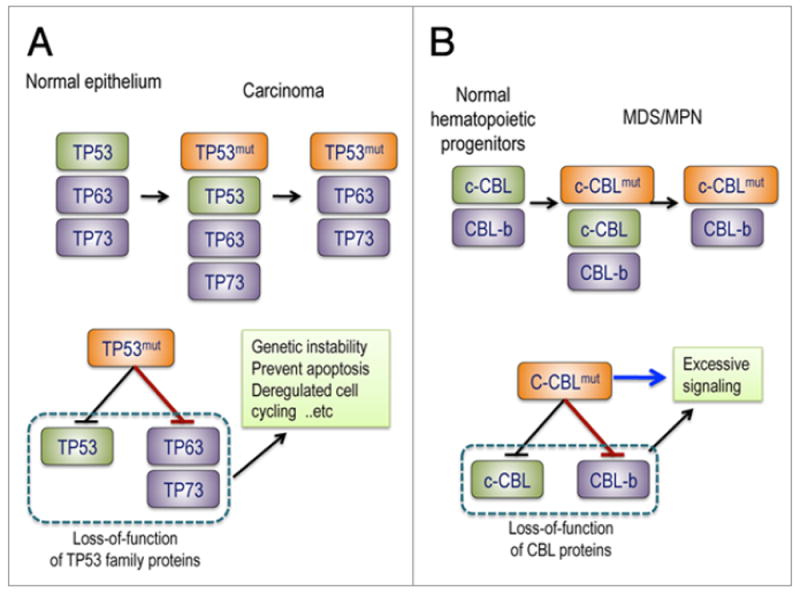Figure 3.

Possible mechanisms of gain-of-function of mutated TP53 and c-CBL. The gain-of-function of TP53 mutants is associated with their potential to induce carcinoma in mice as well as in human, which is considered to be mediated by inhibition of TP63 and TP73. TP53-deficient mice frequently develop sarcomas and lymphomas but only rarely carcinomas, which are thought to be suppressed by TP53 homologues, TP63 and TP73, in epithelial tissues, in the face of loss of TP53. Mutant TP53 inhibits tumor suppressor functions of TP63 and TP73, and compromises TP53-like activity. Similarly, the gain-of-function of CBL mutants found in MDS/MPN may be explained by the inhibition of CBL-b (red arrow), which would result in more profound defects in negative regulation of tyrosine kinase signaling compared to simple loss of c-CBL. On the other hand, c-CBL is thought to have positive regulatory functions that are not directly related to the E3 ubiquitin ligase activity and could be the source of the gain-of-function of c-CBL mutants (blue arrow).
